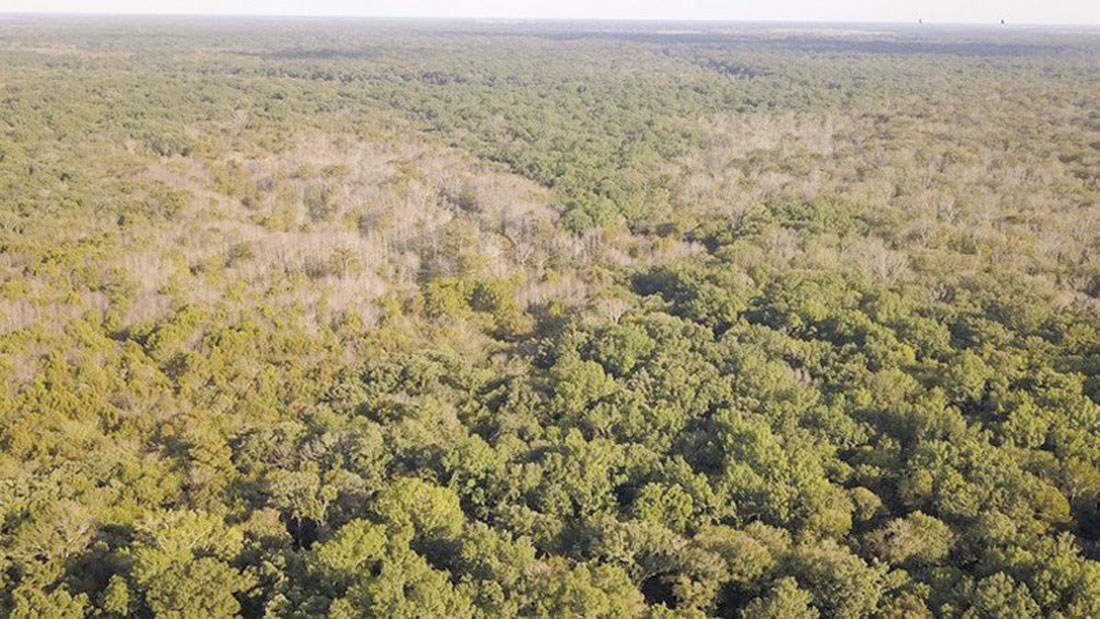Randy Zellers – Assistant Chief of Communications, AGFC
BALD KNOB — Contractors with the Arkansas Game and Fish Commission will begin removing water-control structures on Henry Gray Hurricane Lake Wildlife Management Area to restore drainage to the Little Red River beginning next week. This is the first of many major renovations planned for greentree reservoirs in Arkansas that have helped make public duck hunting one of the state’s largest outdoor industries.
Biologists have identified seven primary drain plugs and structures along the road to Mallard Pond on the WMA impeding the flow of water that will be removed. Water coming from the White River historically flowed through the WMA and exited through these areas to the Little Red.
The road was built on a natural high river bank, but plugs and water-control structures were installed to create an impromptu levee that held water back and increased reliable flooding. Key drainage points have been identified using topographic surveys and LiDAR imaging to reveal that these plugs and structures need to be removed to allow free flow of water. This project is intended to significantly improve drainage within a portion of the WMA where several hundred acres of bottomland hardwood forests have died in recent years.
“We need to manage this area differently if we are going to benefit the forest and the waterfowl that use it in the long term,” Luke Naylor, AGFC waterfowl program coordinator, said. “We have to let water rise and fall in the system if we’re going to save it, and these plugs need to go.”
In place of the plugs and water control structures, contractors will construct five bridges and one low-water crossing that will allow water to flow out of the WMA when river levels allow and continue to provide good public access. The construction will block access to Mallard Pond as well as the boating access to the Little Red River on the WMA. For the most current information on road closures, please call 1-800-440-1477 and choose option 8 or check the AGFC Facebook page.
The project is part of the ongoing battle the AGFC is fighting to maintain the health of seasonally flooded bottomland hardwood forests known as greentree reservoirs on public land in Arkansas. These artificially flooded areas have provided habitat for mallards and other waterfowl for decades, and play a large role in Arkansas’s reputation as the duck-hunting capital of the world. However, changes in the amount of water coming through the system and flooding when the trees are not dormant have taken their toll on many of the species that once provided food and shelter for wintering ducks. Willow oaks and Nuttall oaks, two desirable red oak species, have been replaced by overcup oaks and other less beneficial trees, and in some cases, even those water-tolerant species have died.
dying trees at Henry Gray Hurricane Lake WMA Partial funding for this project was secured through a $1 million North American Wetlands Conservation Act grant written by and awarded to Ducks Unlimited, in which the AGFC has partnered to provide matching funds and services. DU also will provide $100,000 of new matching contributions, with the AGFC providing the remaining $1.7 million needed to complete the project.
Construction on Mallard Pond Road may last until the middle of 2022 or later, depending upon rainfall, river levels and materials.
“We need to get on this as soon as we can to help save the trees in those GTRs,” Garrick Dugger, assistant chief of wildlife management for the AGFC, said. “Right now, the area is dry enough to work, but rain and river levels can saturate the ground and stall construction work. We’ve been working for a long time to identify, engineer and fund the beginning of Hurricane’s renovation, and it’s exciting to see all that effort starting to take shape on the ground to make sure these woods are here for our kids, grandkids and great grandkids.”
Visit agfc.com/gtr for more information on the ongoing effort to restore and maintain Arkansas’s famous green timber waterfowl hunting areas.



